
Swiss chard, along with perpetual spinach, belongs to the beet family (Beta vulgaris) and has been grown since ancient times. Not only are they nutritious, containing a good range of micronutrients, including vitamin C, they are one of the more colourful vegetables you can grow on your plot. The stalks - which come in a variety of colours - are particularly striking.
SITE AND SOIL
Swiss chard will do well on a sunny or lightly shaded site provided the soil is fertile, well-draining and moisture retentive. So, in autumn or winter, make sure that plenty of well-rotted organic matter has been added to the soil. This will provide the nutrition and moisture needed to facilitate the healthy growth your plants. Also, apply a general fertiliser to the soil a couple of weeks before sowing.
SOWING
If sowing direct, space 10cm (4in) apart, 2.5cm (1in) deep, and in rows 45cm (18in) apart. July sowings can be harvested in the following spring. Water plants in with a gentle spray so as not to displace the seeds. Once the seedlings come up you then need to thin them out to 30cm (12in) between each one. The discarded seedlings are not wasted, however, as they can be added to salads.
Alternatively, start seeds off in cell trays or seed trays filled with multi-purpose compost and plant out when they are large enough to handle, 30cm (12in) apart. This can be a better alternative as you can provide protection from strong winds, heavy rain, and slugs while the seedlings establish themselves.
GROWING
Denne historien er fra August 2022-utgaven av Kitchen Garden.
Start din 7-dagers gratis prøveperiode på Magzter GOLD for å få tilgang til tusenvis av utvalgte premiumhistorier og 9000+ magasiner og aviser.
Allerede abonnent ? Logg på
Denne historien er fra August 2022-utgaven av Kitchen Garden.
Start din 7-dagers gratis prøveperiode på Magzter GOLD for å få tilgang til tusenvis av utvalgte premiumhistorier og 9000+ magasiner og aviser.
Allerede abonnent? Logg på
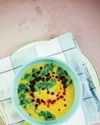
SEPTEMBER SPECIALS
This month, with sweetcorn, figs and blackberries on the menu, Anna Cairns Pettigrew is not only serving up something sweet and something savoury, but all things scrumptious

FLAVOURSOME FRUIT AUTUMN RASPBERRIES
September - is it late summer or the start of autumn? David Patch ponders the question and says whatever the season, it's time to harvest autumn raspberries
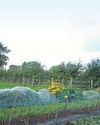
SOW GREEN THIS AUTUMN
Covering the soil with a green manure in winter offers many benefits and this is a good time to sow hardy types, says KG editor Steve Ott

A HISTORICAL HAVEN OF FRUIT AND FLOWERS
KG's Martin Fish takes time out from his own plot to visit a walled garden in Lincolnshire which has been home to the same family for more than 400 years

RESTORING THE BALANCE
The phrase regenerative gardening is often heard in gardening circles, but what is it? Can it help you to grow better veg? Ecologist Becky Searle thinks so, and tells us why
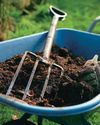
WASTE NOT, WANT NOT
Garden Organic's Anton Rosenfeld shares his expertise on using compost made from green bin collections with handy tips on getting the right consistency and quality
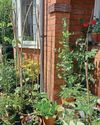
Celebrating Organic September!
In this special section we bring you four great features aimed at improving your crops and allowing nature to thrive
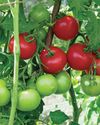
SEEING RED
Do your tomatoes have a habit of remaining stubbornly green? Or perhaps you're lucky to enjoy lots of lovely fruits - just all at once. Either way, Benedict Vanheems is here with some top tips to ripen and process the nation's favourite summer staple
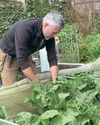
NEW KIDS ON THE BROCCOLI!
Rob Smith is talking broccoli this month with a review of the different types available and suggestions for some exciting new varieties to try
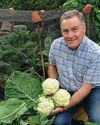
A NEW kitchen garden
Martin Fish is getting down to plenty of picking and planting on the garden veg plot, while Jill is rustling up something pepper-licking good!